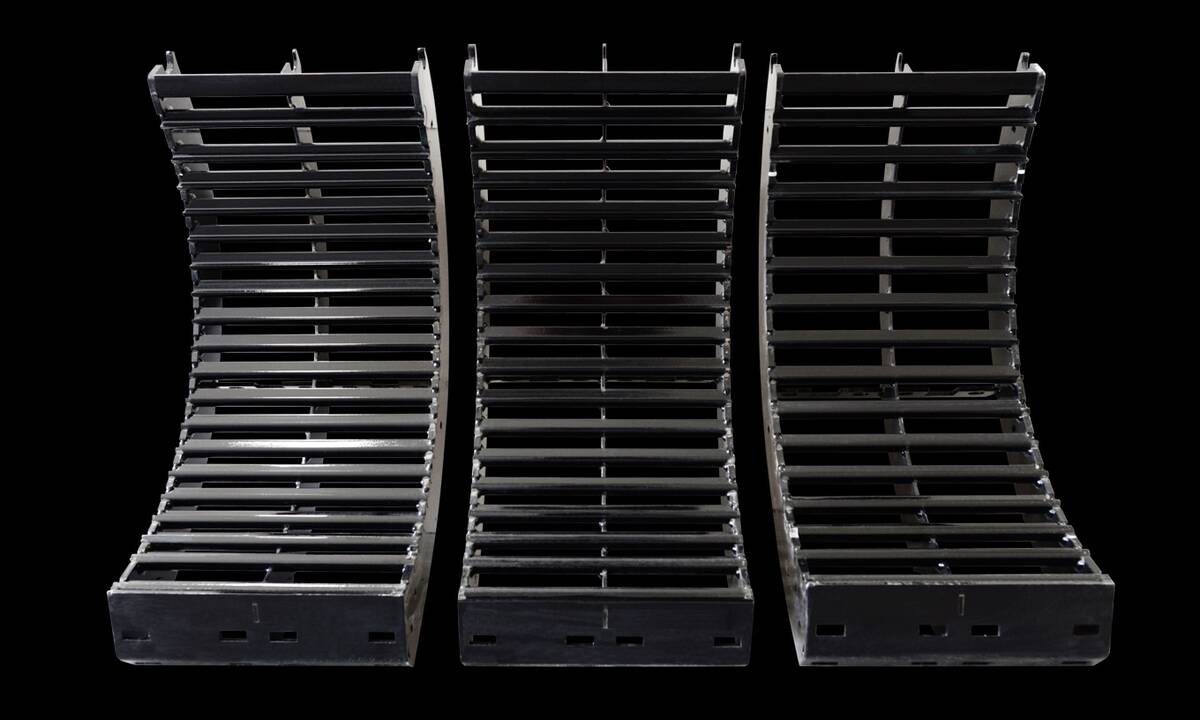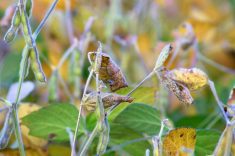Soybean growers have variety options when it comes to soybean cyst nematode (SCN), but pulse specialists say those varieties largely rely on the same type of resistance, one that has already come under fire in the U.S.
The University of Manitoba, led by Mario Tenuta, has been on the watch for SCN in Manitoba since 2012, but this is the first year that actual symptoms have been reported.
Why it matters: Producers may want to add SCN into their variety choice next year, but most resistant varieties rely on the same genetic source, and evidence out of the U.S. says its days might be numbered.
Read Also

MANITOBA AG DAYS 2026: Stacked equipment category expected at Innovation Showcase
Ten of 28 Innovation Showcase entries at the Manitoba Ag Days 2026 farm show Jan. 20-22 in Brandon are in the equipment category.
Last month, Tenuta’s team confirmed both visible symptoms and the microscopic presence of SCN in four fields out of 106 tested this year. Cases were in separate municipalities, although Tenuta later noted that all but one was close to a waterway, exactly the type of area he had been expecting it to crop up since being confirmed upstream in North Dakota.
In response, producer groups and the province urged growers to take a second look at production practices, particularly those that would move soil from field to field. Farmers were urged to reduce tillage, consider wind and weather if they had to till, clean equipment between fields and to minimize traffic.
Resistance, however, was also part of the puzzle. Farmers were urged to consider resistant varieties when planning their seed for next year.
“When you’re planning your rotations, you need to look at how many times you’ve had soybeans and what your risk level is for potentially seeing SCN in the future,” Manitoba Agriculture pulse specialist Dennis Lange said.
Short rotations are at greater risk, he said, along with areas prone to flooding since the pest can spread through water.
There are resistant varieties aplenty, and across maturity groups, according to the 2019 edition of Seed Manitoba. Western soybean trials planted 20 varieties and eastern trials planted 33, according to the document. Some varieties appeared in both the western and eastern trials.
Most resistant varieties on the market, however, are based around the PI 88788 genetic line, genetics that now garner significant resistance concerns south of the border. A monitoring program out of Iowa State University first found an SCN population that reproduced more than 10 per cent on a resistant variety back in 2001. By 2015, every data point tested crossed that threshold. According to the SCN Coalition, a group of American researchers dedicated to SCN research and education, states from Minnesota south to Tennessee can expect anywhere from 17 to 100 per cent of SCN populations to reproduce above 10 per cent when tested on a PI 88788 variety.
In Ontario, that number sits at 33 per cent, according to the coalition.
Cassandra Tkachuk, production specialist with the Manitoba Pulse and Soybean Growers, estimated that about 97 per cent of the resistant varieties in Manitoba rely on the same source of resistance.
“We might be OK here but, kind of like other pests that have moved up spreading throughout the continent, we might be inheriting those resistant pests as well,” she said.
The pest is serious, Tkachuk acknowledged, but it is not serious in Manitoba yet at the levels currently reported.
Confirmed cases this year were not serious enough to cause economic damage.
“Maybe we want to start incorporating these resistant varieties into a rotation, but I would not discredit the varieties that don’t have resistance at this time,” Tkachuk said. “We’re still telling farmers, if you’ve got a really good solid variety that performs on your farm, this isn’t a reason to drop that one like a hot potato.”
Time will tell how well posted resistance translates to Manitoba, Lange said.
There have been improvements to SCN varieties in terms of yield, he added. Farmers who turned to resistant varieties when SCN was first confirmed in Ontario saw a yield hit, he said, something that is not necessarily the case today.
“When you really start looking at the data closely and start looking at comparing it to the check while you’re staying within your maturity grouping, you’re not going to see a huge fluctuation in yields by going to something with SCN resistance,” he said.
Both Lange and Tkachuk urged producers to consider management as a first line of defence.
Seed companies are trying to up their game on SCN.
Articles on company websites, such as Syngenta, note the continuing search for new sources of resistance, including the use of GMO.
The search for SCN resistance was among the topics highlighted at a recent BASF event in Raleigh, N.C.
The company has previously said it is working on resistant varieties, as well as seed treatment options.
“Cyst nematode has a lot of concern just with the resistance in the market today,” Allen Gent, head of BASF’s U.S. soybean business said. “To sustain that with what’s on the market is probably not viable, so we need to make sure that we bring in multiple solutions to kind of give growers an answer.”
















